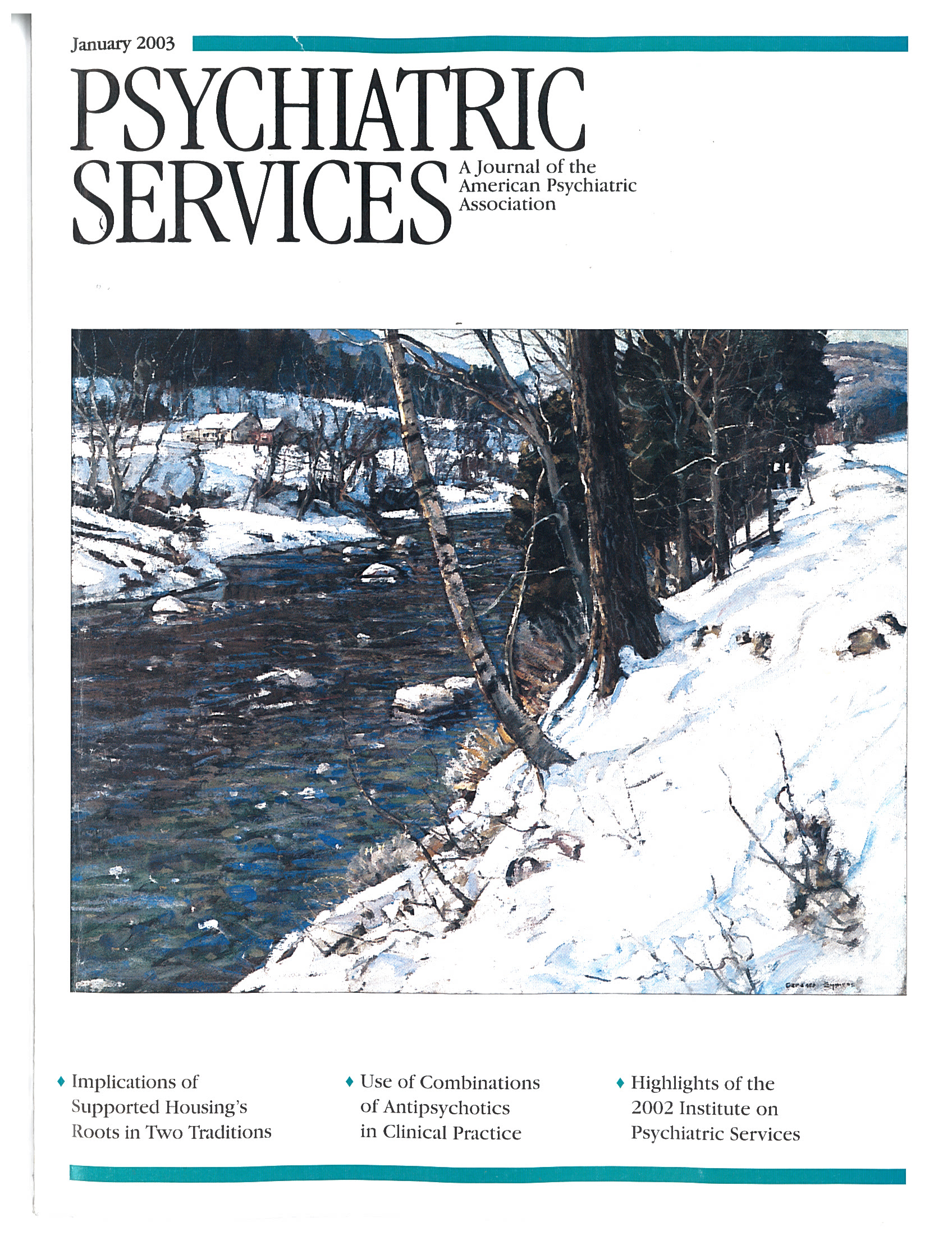Use of a Psychiatric Service Dog
To the Editor: Manic patients are notorious for hiding their symptoms from others in order to preserve their euphoric state. Furthermore, when others observe such symptoms and comment on them, the inherent subjectivity of their judgment allows patients to discount their opinions and question their motivations. Spouses are rarely believed. Physicians are viewed as conservative nay-sayers. Friends are assured not to worry.
Often there is no one around to notice the symptoms, because persons who experience mania sometimes live alone and contact their physicians only when they are depressed. Thus in many instances the person becomes aware of the need for treatment—or is compelled to accept it—only after some regrettable psychosocial consequence has occurred. What is needed is a detection mechanism whose discriminating power for judging behavioral states is close to or better than that of a human. The mechanism must also be able to express this observation in a way that does not lead the manic person to question the observer's objectivity or motivations.
Ms. W is a 38-year-old female with lifelong bipolar disorder. For most of her life her disorder was undiagnosed, and she self-medicated with a variety of off-the-shelf and illicit drugs. As a result, her condition developed into a very rapid-cycling form of the disease. Six years ago, she began treatment with various mood stabilizers. Soon after Ms. W's disorder was diagnosed, she acquired a puppy. The puppy's grounding presence made her feel better. Over subsequent months, as Ms. W cycled in and out of mania, she noticed that when she sat at the computer for hours on end, the dog would butt her elbow repeatedly with his nose. On two occasions this behavior frustrated her to so much that she yelled at the dog.
Eventually Ms. W realized that her dog butted her only when she was irritable and fixated on the computer—in other words, in a manic state. The dog sensed a change in her mood that made him uneasy, and he was inadvertently alerting her to the onset of a manic episode. The dog's behavior did not guarantee that Ms. W would heed the message. However, because her basic logical functions were intact, it was difficult for Ms. W to accuse the dog of being manipulative or of having ulterior motives.
The use of service dogs in various branches of medicine is expanding, although there are areas of controversy (1). Besides their well-known role in assisting visually impaired and other physically disabled persons, they are particularly useful in alerting diabetics to abrupt changes in blood glucose levels and epileptic patients to incipient seizures. Could dogs' ability to anticipate seizures mean that they can also sense the onset of mania? The use of dogs in psychiatry is an appealing idea, if only for stress reduction (2), but the literature is scant. Only sporadic reports of animal-assisted therapy in cases of schizophrenia (3) and on inpatient psychiatry units (4) have been published. It is not clear what extent dogs could be trained to smell or sense changes in psychiatric conditions at their earliest stages. Legal precedents support use of service dogs in public (5), and such use is protected under the Americans With Disabilities Act.
It is time to consider adding to the treatment of many patients the following prescription: Get a dog!
Dr. Smith is affiliated with the National Center for the Treatment of Anxieties, Phobias, and Depression and Dr. Esnayra is with the National Academy of Sciences in Washington, D.C. Dr. Love is with Westat in Rockville, Maryland.
1. Odendaal JS: Animal-assisted therapy: magic or medicine? Journal of Psychosomatic Research 49:275-280, 2000Google Scholar
2. Kingwell BA, Lomdahl A, Anderson WP: Presence of a pet dog and human cardiovascular responses to mild mental stress. Clinical Autonomic Research 11:313-317, 2001Crossref, Medline, Google Scholar
3. Barak Y, Savorai O, Mavashev S, et al: Animal-assisted therapy for elderly schizophrenic patients: a one-year controlled trial. American Journal of Geriatric Psychiatry 9:439-42, 2001Crossref, Medline, Google Scholar
4. Houghtalen RP, Doody J: After the ADA: service dogs on inpatient psychiatric units. Bulletin of the American Academy of Psychiatry and Law 23:211-217, 1995Medline, Google Scholar
5. Eames E, Eames T: Interpreting legal mandates: assistance dogs in medical facilities. Nursing Management 28(6):49-51, 1997Google Scholar



